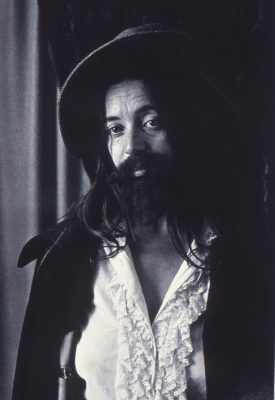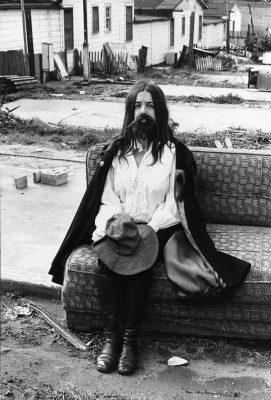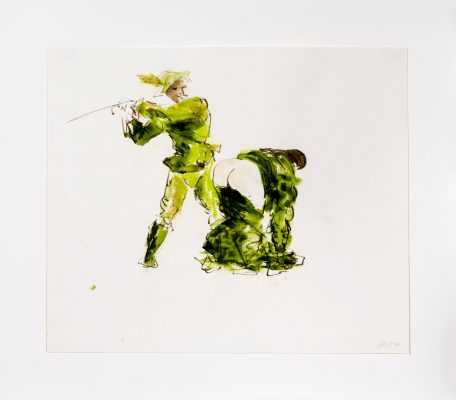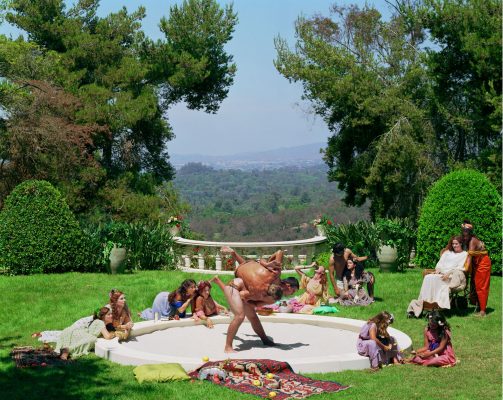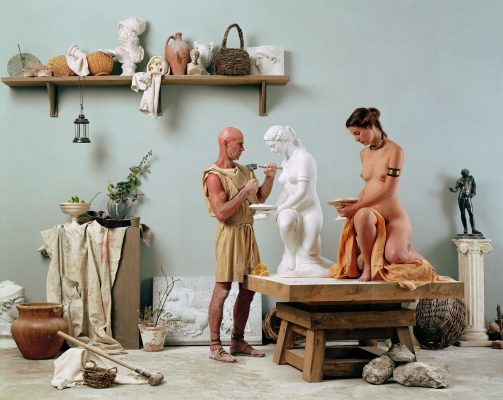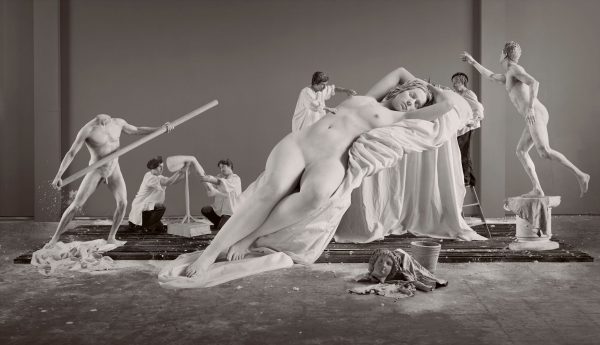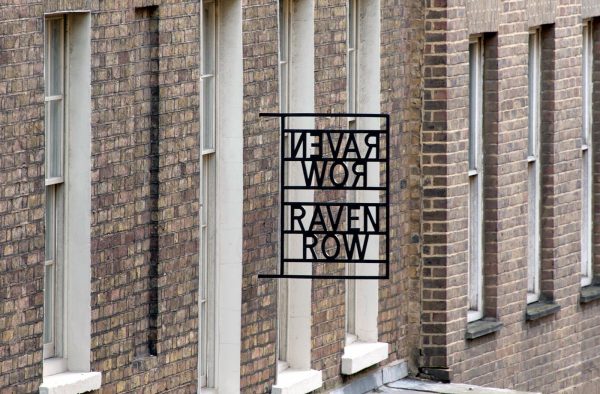For the past five decades, feminist conceptual artist Eleanor Antin has created an anti-essentialist chronicle of herself. Working within a range of media – including photography, film, writing and installation – Antin has explored a stream of selves, influenced by everything from Yiddish theatre to European cinema. As she has commented: ‘I’ve always been addicted to masking, to the slipperiness of genre. I despise purity. It’s so boring. What the hell, it doesn’t exist, anyway.’
During her rise to prominence in New York’s downtown art scene of the late 1960s, when women artists and feminist themes were routinely excluded from gallery programming, Antin’s work presented female subjects with bare-knuckles chutzpah, depriving the viewer of the easy consolations of pathos or titillation. A recent reappraisal of feminist art from this period, such as the showcase Sex Work: Feminist Art & Radical Politics at Frieze London – featuring the libidinal, uninhibited work of artists such as Marilyn Minter (sucking, rhinestone-studded mouths) and Renate Bertlmann (cacti sprouting hot pink dildos) – shows how defiantly these second-wave feminists exploded taboos around female sexuality and the body. It also shows an establishment ready, 50 years on, to welcome them with open arms.
But the current popularity of second-wave feminism comes with questions of how to read and receive the politics of these works today, and how to negotiate the way in which their former riotous, outsider charge is inevitably dampened by the embrace of the market.
As Antin’s work comes back into the spotlight, how do her expressions of 1970s feminism come into conflict with contemporary identity politics? At a recent performance at the Serpentine gallery, Antin was grilled by an audience member about her use of blackface when inhabiting her persona of Eleanora Antinova, whom she invented in the early 1980s. At the time, as Antin explained in a New York Times interview, the persona was an intended expression of solidarity with those caught within the intersecting oppressions of race and gender: ‘She’s an outsider, like women and blacks in our society… Antinova is a survivor.’ And yet, to audiences today, Antin is guilty of glib appropriation: a white artist performing an experience of blackness to which she had no claim.
At 82 years old, Antin is still ambitiously at work. Romans & Kings at Richard Saltoun Gallery is an exhibition that dramatises the present moment by impersonating the past. The first room features selections from two of Antin’s more recent bodies of work: ‘The Last Days of Pompeii’ (2002) and ‘Helen’s Odyssey’ (2007). As the titles suggest, Antin raids ancient history – the classical myths of Greece and Rome – to re-stage it, challenging the master narratives of western culture with a vision that’s hyper-stylised, arch and shot through with campy irreverence.
‘Constructing Helen’ (2007) dominates the room. A digitally photographed collage in austere black and white, it depicts Helen of Troy as a nude clay sculpture – monumental and supine – waiting to be brought to life. Helen has long been condemned to myth with a kind of slut-shaming ambivalence: the supreme object of female beauty who passively ensnared Paris, Prince of Troy, and ignited the Trojan War. But what if the moral co-ordinates of history were scrambled? Cooking the history books, Antin enacts a kind of snarky revenge on ancient injustices.
The artists in ‘Constructing Helen’ are mere Lilliputians trying to make their mark, wearing skewed berets and foppish poet shirts. One sculptor tweaks Helen’s nipple – the finishing touch? – while making an incision with a modelling knife. Yet for all the scene’s exploitation, male power is show as curiously slavish, even shrivelled. Two sculptures strike heroic poses of assertion, but look comically grandiose. One – decapitated – aimlessly brandishes a spear, as if self-consciously compensating for his nakedness. Could torching Troy be Helen’s vengeance for this vainglorious male meddling?
‘The Artist’s Studio’ (2001) also conveys the potency of the female muse. A bald sculptor works with po-faced rigour to immortalise his nude subject in marble. From Helen onwards, the fantasy of female beauty has helplessly ensorcelled male artists – resulting in some of western civilisation’s greatest art. Yet it’s been a one-sided affair, and Antin ‘corrects’ this defective art-historical narrative by wryly snatching back the gaze: a woman looking at men looking at women.
Elsewhere, the show explores this inversion of gendered looking. In ‘A Hot Afternoon’, two wrestlers in gold lamé loincloths – like extras from a Derek Jarman-directed swords and sandals epic – are locked together in combat. Grappling in perfectly manicured gardens, the gladiators almost look as if they’ve frozen into sculpture themselves: an act of pure objectification.
These works draw unsubtle but self-evident connections to our own era. Indeed, Antin has described Pompeii as having ‘dark shadows in which failure and death lurk at the edge of consciousness. Now, in these times, we have even closer parallels with those ancient, beautiful, affluent people living the good life on the verge of annihilation’. Beyond the surface gloss of these photographs, Antin is attempting to redress some of history’s most glaring imbalances.
‘Helen’s Vengeance’ (2007) depicts the severed head of Homer, served like chicken in a basket from a picnic in hell. Helen, a sneer scrawled across her lips, raises a toast to her dead progenitor. In the background, a loin clothed captive – Paris? – has his cage rattled by a comically aggrieved virago. By unloosing Helen of Troy from the great word-prison of the Iliad and its cultural authority, Antin not only suggests an alternative ending to this well-trodden fable, but points to its transcendence – emancipating Helen from the narrow determinism of the canon. History itself, Antin poses, is as constructed as fiction.
‘The King of Solana Beach’ (1972–74) also attempts to displace timeworn forms of power. Antin poses as a saturnine drag king, dressed like a wandering troubadour in a felt hat and cloak. Antin’s King is an incongruous ray of black sunshine in this San Diego surfing mecca. He seems to incarnate a new kind of sovereignty: vulnerable, reflective. In the five black and white photographs that make up ‘Men’, the King poses as a radically democratic figure: signing charters for his people, mundanely bumbling around a drug store, flinging out his arms in symbolic embrace of his kingdom. ‘Here’ shows the King, Canute-esque, trying to stem an encroaching tide of property developers.
Antin’s work gave a platform to a mode of presentation that contradicted gender expectations at the time and surely paved the way for a new generation of artists to interrogate gender norms. But today, this gender-switching looks oddly quaint in an era when the fluidity of gender, and the demolishing of fixed binaries, has entered the mainstream.
Romans & Kings comes full circle with Antin’s most celebrated work, ‘100 Boots’ (1971). Presented as 51 postcards posted to over 1,000 people, they record a stampeding breakout from the rarefied, often woman-excluding confines of the 1970s art gallery. Seizing the means of her own exhibition and distribution, Antin’s anthropomorphised Wellingtons make their way to New York City, at once eerily absent and ebullient. We see them in ominous rank and file outside a bank; stomping through a dystopian industrial landscape; lined up in a supermarket aisle; passing a row of ducks.
In her biography of post-modernist punk writer Kathy Acker – a close friend of Antin’s – Chris Kraus discusses the significance of ‘100 Boots’. While art history has come to see Antin’s work as a clever strategy of navigating around traditional gallery shows, there was another, more practical motive for her modus operandi: ‘At the time it was the only means Antin had of showing her work,’ Kraus explains. In other words, she did not have gallery recognition, and so she fought back with mail art.
Indeed, Antin’s bold method was influential. Kathy Acker later adopted it to help circulate her early writing and gain recognition, prefiguring modern self-publishing. By 1973, ‘100 Boots’ found its way to MoMA and – finally – its place in the canon of seminal feminist art, the revolutionary spirit of ‘100 Boots’ ensuring Antin’s legacy: a second-wave feminist who stood her ground and forced her way into the fold.
